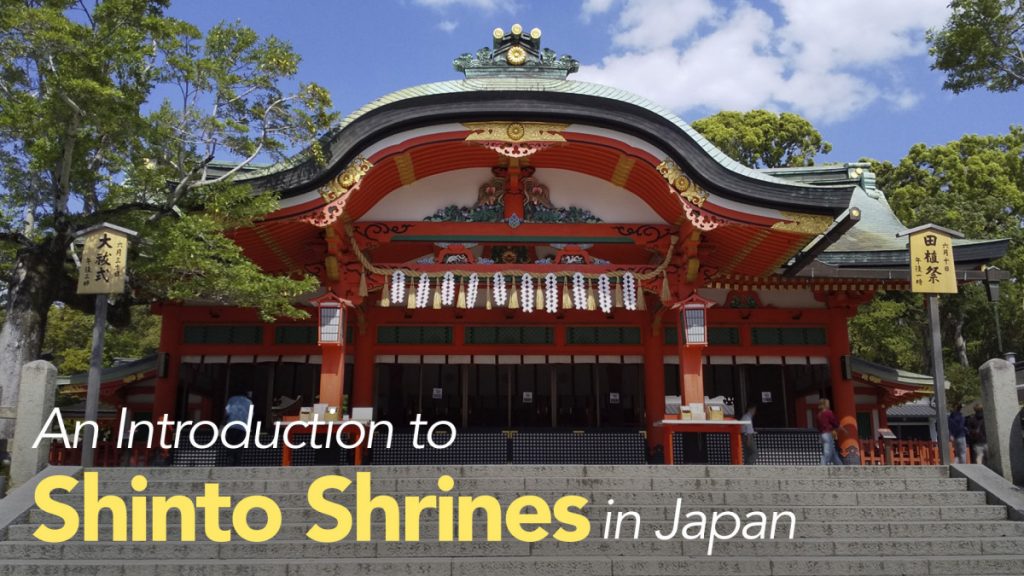
In the heart of Japan, where ancient traditions blend seamlessly with the modern world, the serene presence of Shinto shrines beckons both locals and travelers alike. These sacred spaces, often nestled in tranquil landscapes, embody the spiritual essence of Shinto, Japan’s indigenous religion. Each shrine tells a story, inviting visitors to pause and reflect, to connect with the kami, the spirits that inhabit the natural world around them.
Walking through the torii gates that mark the entrance to these enchanting sites, one is enveloped by a sense of peace and reverence. The simple yet profound architecture, lush gardens, and ritual practices create an atmosphere that feels both timeless and alive. Exploring Shinto shrines in Japan offers a glimpse into the country’s rich cultural heritage, highlighting a deep-seated appreciation for nature and the divine, allowing everyone to experience the whispers of the kami in their own unique way.
The Spiritual Significance of Shinto Shrines
famous shrine in japan
Shinto shrines in Japan serve as sacred spaces where the divine and the earthly realms converge. They are dedicated to kami, the spirits or gods that embody various elements of nature and human experiences. Every shrine is a testament to the reverence Japanese people have for these spiritual beings, highlighting the deep-rooted connection between nature and spirituality. Visitors to these shrines often find a sense of peace and tranquility, allowing for introspection and a stronger connection to the spiritual world.
The architectural design of Shinto shrines reflects their spiritual significance, with torii gates marking the transition from the mundane to the sacred. These gates symbolize purity and invitation, prompting individuals to leave behind their worldly concerns as they enter a realm imbued with divine presence. The careful placement of shrines in harmonious locations, often nestled in forests or near mountains and rivers, further emphasizes a respect for the natural world, reinforcing the belief that the kami reside in everything around us.
Ritual practices at Shinto shrines, such as offerings and prayers, deepen the interaction between worshippers and the kami. These acts are not merely ceremonial but are rooted in a profound belief in the blessings and protection that the kami can provide. Through these practices, individuals express gratitude, seek guidance, and uphold a sense of community, making Shinto shrines vital not only for personal spiritual growth but also for maintaining cultural identity and traditions in Japan.
Architectural Wonders: Design and Symbolism
The design of Shinto shrines in Japan reflects a deep connection between the natural world and the spiritual realm. Generally constructed from wood, these shrines harmonize with their surroundings, often featuring thatched roofs and open spaces. This integration not only emphasizes the beauty of nature but also demonstrates the Shinto belief in kami, or spirits that inhabit natural elements. The simplicity of the structures encourages visitors to appreciate the serene environment, inviting them to engage in quiet contemplation.
Symbolism is integral to the architecture of Shinto shrines. The torii gate, a prominent feature, marks the transition from the mundane to the sacred, signaling a passage into a hallowed space. Often painted bright vermillion, these gates symbolize protection from evil spirits and serve as a striking contrast against the greenery of the shrine grounds. Other elements, such as the sanjin, or sacred tree, are often incorporated into the layout, representing the presence of the kami and serving as a physical embodiment of divine essence.
The layout of Shinto shrines is carefully designed to create a spiritual experience for visitors. The sloping roofs and intricate carvings evoke a sense of grace and harmony, while the use of natural materials promotes a feeling of warmth and connection. Each shrine has its own unique characteristics, influenced by local culture and geography, yet they all share a common goal: to foster a sacred link between humans and the divine. This architectural philosophy encapsulates the essence of Shinto, making each visit to a shrine a profound encounter with spirituality.
Rituals and Festivals: A Closer Look
Rituals and festivals play a vital role in the life of Shinto shrines in Japan, serving as a bridge between the divine and the earthly. Each shrine has its unique set of ceremonies, often aligned with seasonal changes and agricultural cycles. Regular rituals, such as offerings of rice and sake, are made to the kami, inviting their blessings and ensuring harmony within the community. These acts of devotion reaffirm the connection between worshippers and the spiritual world, fostering a sense of belonging and cultural heritage.
One of the most celebrated festivals, or matsuri, is the Gion Matsuri in Kyoto, which spans the entire month of July. This festival features elaborate floats, traditional clothing, and a series of rituals that honor the kami of Yasaka Shrine. It reflects the rich tapestry of Shinto beliefs and local customs, bringing together communities in a vibrant display of gratitude and reverence. Through such events, participants not only celebrate their faith but also reinforce community ties, making matsuri a cornerstone of Shinto practice.
Another significant event is the Hatsumode, the first shrine visit of the new year. During this time, millions flock to Shinto shrines across Japan to pray for good fortune and health in the coming year. The atmosphere is filled with optimism and hope, as families engage in traditional practices, such as drawing omikuji (fortune slips) and purchasing protective amulets. These rituals exemplify the deep-rooted significance of Shinto beliefs in daily life, highlighting how the customs associated with Shinto shrines continue to thrive and adapt through generations.
Visiting Shinto Shrines: Etiquette and Experience
Visiting Shinto shrines in Japan offers a unique glimpse into the spiritual and cultural heart of the nation. Before entering a shrine, it is customary to purify oneself at the chozuya, where visitors wash their hands and mouth. This ritual symbolizes the cleansing of impurities, allowing one to approach the sacred space with respect. It is important to follow the proper sequence: first, rinse your left hand, then your right, and finally, rinse your mouth before washing the handle of the ladle as a final act of cleanliness.
Upon entering the shrine grounds, it is essential to observe the decorum associated with these sacred places. Visitors should approach the honden, or main hall, with reverence, bowing respectfully before making an offering. It is common to toss a small coin into the offering box, followed by two bows, two claps, and a final bow before making a wish. Each movement carries meaning, reflecting the deep-seated beliefs in respect and gratitude toward the kami, the spirits worshiped at the shrine.
Experiencing a Shinto shrine is not merely about the rituals but also about appreciating the serene beauty of the surroundings. Many shrines are nestled in tranquil forests and gardens, inviting visitors to connect with nature. The architectural style, characterized by wooden structures, intricate torii gates, and serene landscapes, enhances the meditative experience. Taking a moment to reflect amidst the stillness allows visitors to feel the whispers of the kami, enveloping them in the enchantment of this ancient tradition.


